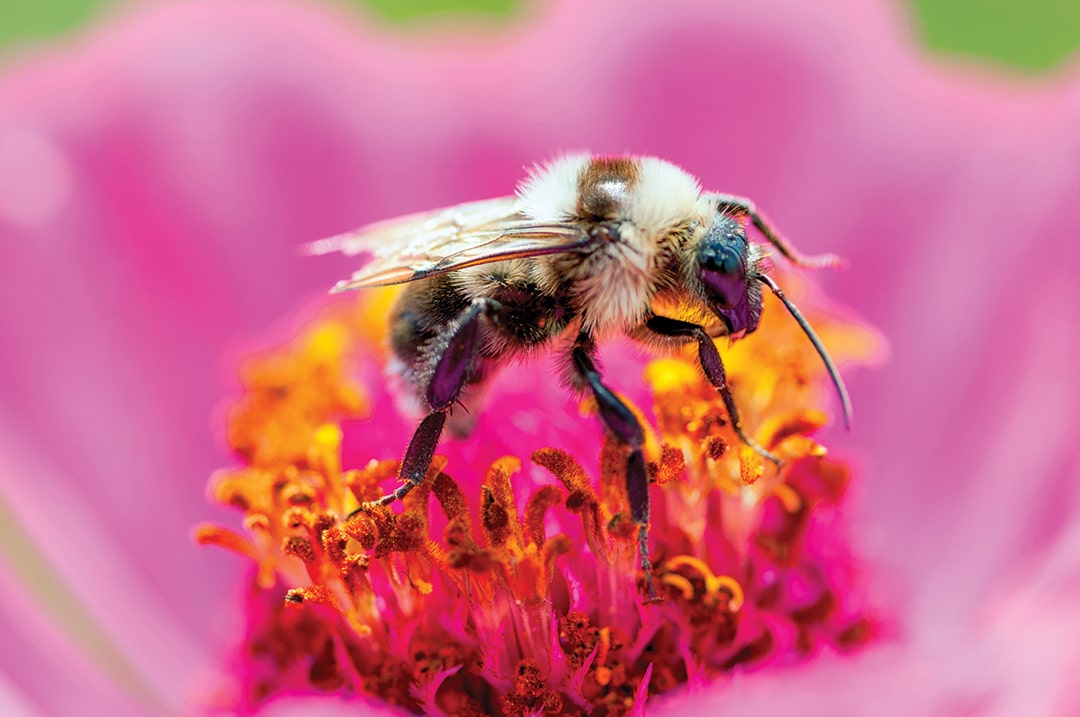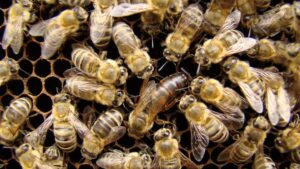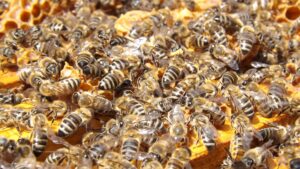Farmers and Beekeepers Plan, Communicate to Protect Bees
It’s wintertime on the farm, when fields, and honey bee hives, are buried under snow and ice. But spring thaws are coming and it’s an important time for farmers and beekeepers to connect.

“The planting of corn and soybeans can potentially impact the beekeepers because of the possibility for dust off of insecticides used in seed treatments, so it’s important for farmers to know where the hives are and communicate their planting plans ahead of time,” says Caydee Savinelli, pollinator and integrated pest management (IPM) stewardship lead at Syngenta.
Despite the perception to the contrary, interactions between farmers and beekeepers are actually overwhelmingly positive in most instances.
“No farmer wakes up and says they want to kill bees today,” says Mike Smith, project director for the Conservation Technology Information Center (CITC), a public-private, non-profit partnership comprised of ag industry associations, conservation organizations and producers and supported by the U.S. Environmental Protection Agency and other public entities. The CITC is a member of the Honey Bee Health Coalition, which supports collaboration to improve the health of honey bees, specifically around production agriculture.
Partnerships can be a challenge without the efforts of many who are working to create connections and foster relationships.
“Farmers may not even know there are bees nearby that could be impacted, so it’s important we forge these connections and continue to encourage collaboration,” Smith says.
“We assume the awareness is there, but it’s not always top of mind, so it’s important to have reminders during planting season,” says Parry Klassen, executive director of the Coalition for Urban Rural Environmental Stewardship (CURES).
Swapping jobs
Most disagreements stem from a lack of understanding, which can be solved when farmers and beekeepers participate in job-swap days.
“One of our main goals is to bring these groups together and let them explain their operations to the

other party,” Smith says.
Before participating in these job swaps, farmers may think beekeepers could just move their hives on spraying days.
“But when we visit the hives and demonstrate they weigh more than 100 pounds and aren’t able to be moved easily, it can open their eyes a little,” Smith says. “It’s not as simple as picking them up or moving them to a barn for the day.”
In the same way, many beekeepers expect farmers to only spray on days with no wind, which isn’t possible when considering limited planting windows.
“When we’re able to bring these groups together for various job swap days, they can start to appreciate each other’s challenges a little more and start working together on new projects,” Smith says.
Klassen agrees.
“As a grower, one of the things to think about is where the hives are, especially when you’re loading seed in the spring. You need to make sure you’re loading those machines as far away from the bees as possible. That’s when the most dust-off potential can occur,” Klassen says.
Common goals
Recently, Smith has seen farmers and beekeepers work together on a cover crop research project. Beekeepers want to add supplemental bee forage while farmers look for soil benefits and weed management solutions. Working together helps satisfy both of those needs with one project.
“By bringing their respective areas of expertise to the conversation, the outcomes are even better,” Smith says.
Another example of a collaborative project is adding pollinator habitats on farms.
“They can work together to select ideal locations and plant mixes,” Smith says.
Smith believes that collaborative efforts led by Honey Bee Health Coalition show how farmers can work together of their own accord.
“They don’t need an official program to do things like that. Plus, it doesn’t cost anything for them to get together and work on it. All it takes is one person being willing to reach out and ask for help in implementing an idea,” Smith says.
State-managed efforts
However, in order to foster these natural partnerships, many states are working to encourage those connections and coordinate resources.
The U.S. Pollinator Health Task Force was created in 2014 with the goal to have state agencies or other groups lead the development of Managed Pollinator Protection Plans (MP3s), which are collaboratively developed by state agencies, beekeepers, growers and other stakeholder groups.
These MP3s are specific to each state but they all aim to encourage communication and collaboration between various parties in the agricultural community to develop best management practices that minimize the risks of pesticides to bees.
For example, North Dakota, the top honey producing state in the nation, has more than 500,000 hives during some parts of the year. At the same time, over 90 percent of North Dakota acreage is used for agriculture, so collaboration is key to ensuring success for both beekeepers and farmers.
Beekeepers are required by law to register their hive locations with the state and a detailed map is available that shows the precise location of hives throughout the state, as well as contact information for each beekeeper. Beekeepers are able to sign up for pesticide treatment alerts, while farmers or other pesticide applicators can receive alerts for new apiary locations in their area.
“Some states have that mandatory registry but beekeepers may have the option to register their hives in other states, so it’s important for them to do that if it’s voluntary,” Smith says.
According to the USDA Regional IPM Centers Information Network, 13 states have finalized their MP3 and 24 states are either drafted or in progress. Others are planned for the future.
Seasonal reminders
Klassen knows farmers are busy people.
They don’t often have spare time to contribute to large-scale pollinator projects or attend pollinator-specific trainings or discussions. He recommends adding pollinator health discussions to the agenda of any meeting where farmers are already gathered.
It’s also important to keep the lines of communication open and the connections current.
“It’s so important for beekeepers to follow the state’s protocol for registering hive locations,” Klassen says.
He recommends checking in, at minimum, every year in the spring.
“You can never assume that someone you talked to a year ago will be doing things exactly the same now,” he says.
It’s as simple as a phone call, or in some cases like in North Dakota, perhaps just signing up for automatic alerts.
“Once they have access to their local beekeepers’ information, for example, by checking a state-managed database, all they have to do is check in,” Smith says.
Savinelli said that’s what many of the MP3s’ greatest benefits will be.
“They are bringing about the communication that needs to happen every spring,” she says.
Of course, it’s also important to let beekeepers know about pesticide applications and other major activities later in the season, but beginning the conversation each spring is a place to start, and once those connections are made, it’s easier to maintain them.
“Awareness is up considerably, thanks to a lot of these efforts,” Klassen says.
As spring approaches and planting for a new year begins, working together is especially important.
One in three mouthfuls of food is reliant in some way on a pollinator. At the same time, farmers are pressured to plow fence rows and tree lines to make room for larger equipment as they strive to increase production to meet the needs of a growing population.
“It’s important to ask where can we make room for pollinator health to be a priority in the context of a productive and profitable agricultural system, and the only way to answer that is by encouraging collaboration,” Smith says.












